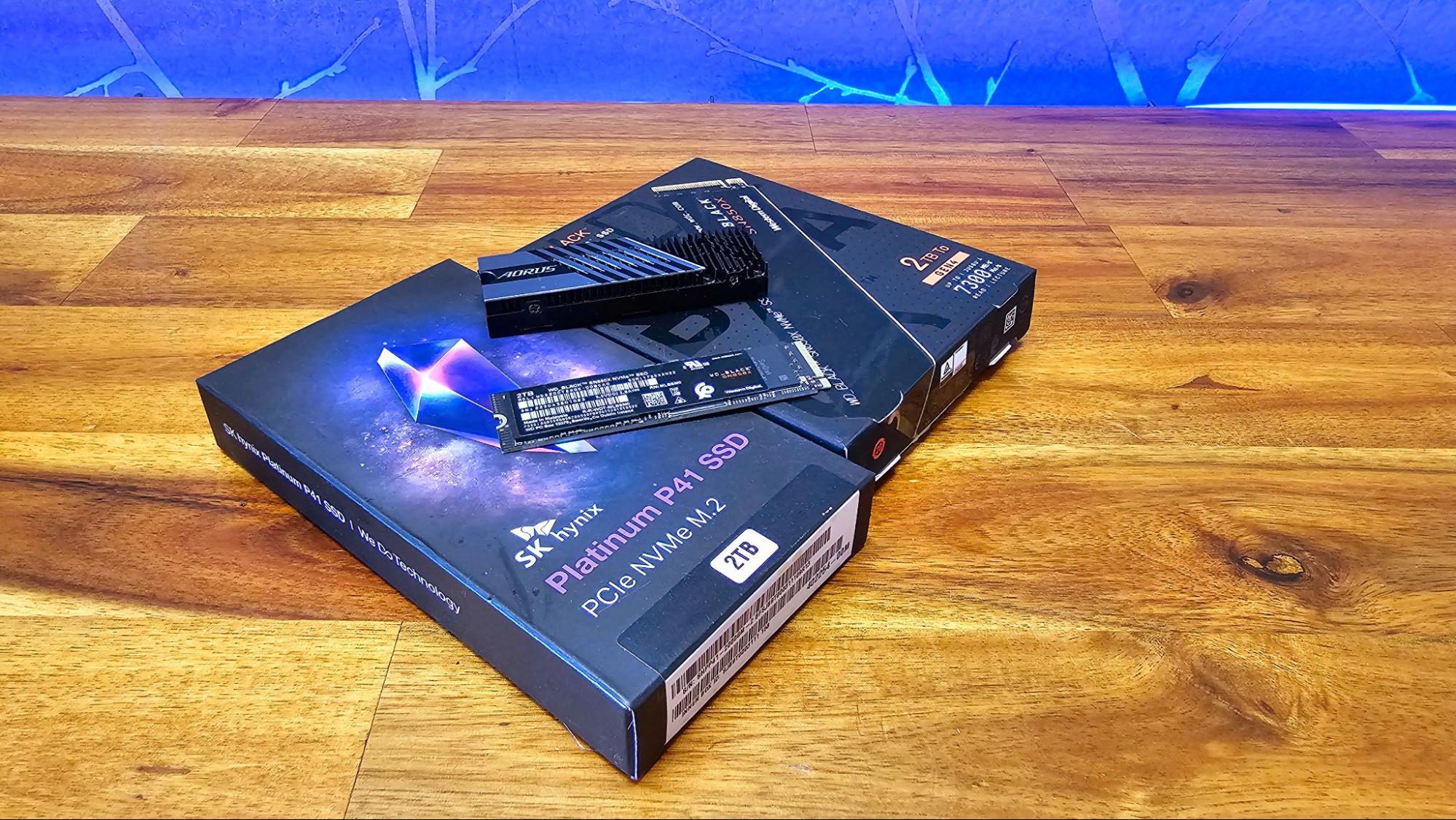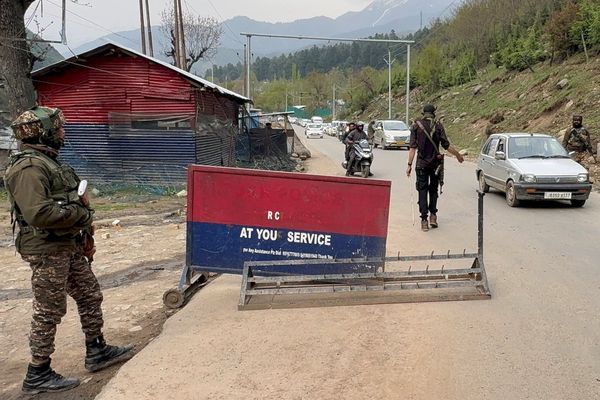
Boot drives rarely get the attention they deserve. The type and capacity of your C: drive significantly affects how fast your system boots, how quickly your programs load, and how long you have to spend tapping your toe before you can actually get your game on.
It’s where all your programs get installed and files get downloaded by default, making your boot drive a huge potential bottleneck for everything you do in your operating system. So why are the boot drives on most modern PCs still so small? To be fair, plummeting solid-state drive (SSD) prices have now thankfully relegated the near-tortuous experience of a spinning-platter boot drive to the past.
Just how far have SSD prices fallen? Intel’s X25-m launched at $595 for the 80GB model in 2008. For roughly a third of that price ($209) a decade later, I bought a Crucial MX500 drive with 25 times that Intel drive’s capacity (2TB). And since then, prices have continued to crater, to the point that some of the more affordable 4TB M.2 SSDs often hover just above the $200 mark.
But even on premium laptops and gaming rigs today, system sellers (be they boutique builders or big-name PC makers) often seem out of touch with the realities of modern pricing and storage needs.
Since I last wrote about this issue a few years ago, things have improved a bit on the consumer and business sides, where storage capacity needs are somewhat low for many people. For example, Dell ships the $849 entry model of its latest XPS 13 with a 512 GB NVMe boot drive. That's probably enough space for most office or home / school users, now that so many of us store things in the cloud. Still, the first model that steps you up to a 1TB drive is $1,349. Granted, you get quadruple the RAM and a higher-end (Core i7) CPU for that added cost as well.
But the retail price difference between a reasonably speedy 512GB and 1TB SSD is roughly $15-30. So anyone who thinks they might want more than 512GB of storage in their laptop should strongly consider stepping up to a 1TB boot drive – and it shouldn't cost more than $50-$100 at most to choose that option, given that the difference in cost between those drive capacities is minimal. Obviously, big companies like Dell buy their drives in bulk and can get much better pricing than I can while surfing Newegg.
Then there’s the gaming PCs, where storage is much more important. We’ve seen several pre-built rigs in recent months (be they laptops or desktops) priced between $2,000 and $5,000, with 1TB SSD boot drives. Now, 1TB is definitely better than half that capacity. But many game installs these days are approaching 200GB – and that's not counting DLC. Clearly something more spacious is called for unless you only plan on having a couple of games installed at a time. And keep in mind many drives slow down precipitously once they're more than half full.
There are fast 2TB PCIe 4.0 SSDs available at retail hovering around the $150 mark. When I wrote this, Samsung's 2TB 990 Pro (the best SSD according to our testing) was selling for $180, and WD's also excellent SN850X was just $160. 1TB versions of those same drives cost $60-$65 less. That's a paltry price difference for double the drive capacity on systems that often cost several thousand dollars.
In recent memory, the worst offender on the mobile gaming front is Razer's Blade 16. It's an expensive laptop in general (thanks in part to a swanky dual-mode Mini-LED display). But all models of the laptop at the time of writing ship with a 1TB SSD, save for the maxed-out RTX 4090 model, which includes a 2TB SSD – and costs a whopping $4,299.99! Give those of us without the deepest of pockets an option for reasonably-spacious storage, please.
These days, if you’re spending more than $2,000 on a gaming rig, I think it’s reasonable for about a tenth of that cost to be spent on the drive that’s going to be responsible for running your OS and games (which means at least a 2TB SSD). Because no matter how fast the graphics card or CPU is, a cramped boot drive is going to lead to a frustrating gaming experience.
Given the continuing slide of SSD prices, here are some guidelines for what I’d like to see from PC makers in 2023. My ego isn’t inflated enough to think that large companies are going to change their plans based on my advice. But at least for anything I review personally, sticking close to these capacities and price points for a PC’s boot drive should be beneficial to a system’s overall score. More importantly, a PC that adheres to these reasonable storage rules will deliver a better experience to potential buyers.
Below 512GB: Unless it’s in a sub-$300 budget laptop, this cramped capacity should never be considered. Many drives start at 500 or 512GB these days, and decent options in that capacity range can be found for less than $40, while lesser capacities still generally cost around $30. Even if that price difference is passed directly to the consumer, it's well worth the extra ten bucks.
512GB: For mainstream systems, this should be considered the absolute minimum--especially if there’s no spare M.2 slot or secondary storage drive.
1TB: This should be the minimum for a gaming PC. Even if it's a budget laptop (like one of the best laptops under $1,000, you should get a system with a 1TB drive. Opt for 512 and by the time you install one recent AAA game, your OS, and a few key programs, you could be dealing with performance issues due to space. Note that, on our best PC Builds page, we have an $800 build with a 1TB drive so it’s more than affordable.
2TB: Any "creator" or gaming-focused PC priced well above $2,000 should come with a 2TB SSD boot drive at this point. It doesn't have to be a class-leading drive. But with options like the 2TB PCIe 4.0 Solidigm P41 hovering around the $100 mark, people with serious storage needs shouldn't have to fumble their bits and bytes around a cramped 1TB SSD.
These guidelines should also be considered for anyone building their own system. I recommend an NVMe drive for any system where performance matters (like a gaming or content creation rig), and a 1TB drive only for a budget build. For most people doing more than basic productivity tasks, a 2TB drive should be standard at this point. In fact, 4TB drives are becoming quite reasonable, with some reputable models getting down around the $200 mark. I would have bought one already, except there are so many affordable 2TB drives these days that I own at least five of those already. I don't have a storage problem, you do — but you don't have to give how affordable SSDs are these days.
Note: As with all of our op-eds, the opinions expressed here belong to the writer alone and not Tom's Hardware as a team.







